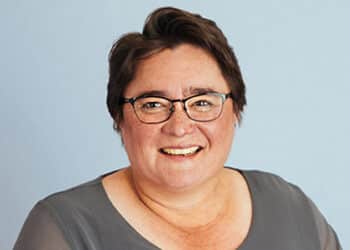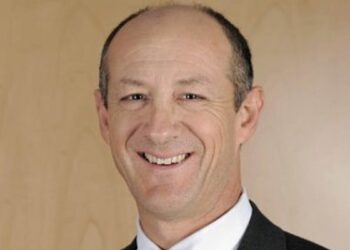In a recent submission to the APESB, SMSF firms Elite Super, Tactical Super, Peak Super Audits, Apex Super Audits, Red Willow Super and Terri Scott Accounting argue that the adoption of a 20 per cent referral fee threshold is neither consistent with international standards nor warranted to ensure auditor independence when dealing with clients that are not public-interest entities.
The submission noted that there was inconsistency between Australian and international standards and that the Parliamentary Joint Committee (PJC) on Regulation of Auditing in Australia did not identify any specific concerns relating to independence threats created by concentration of fees from a specific referral source.
“While this does not mean that action to tighten independence requirements in this area is inappropriate, we feel that the absence of specific recommendation by the PJC should be weighed carefully before Australia departs from the international standard in this matter of fee dependency,” the joint submission said.
The firms also observed that the proposed AUST R410.14.1 differentiates unfairly between practices that derive smaller individual fees by referral and those that derive larger audit fees on a client-by-client basis.
“SMSF audit firms often derive fees from a referral source, such as an accounting practice. In this sense, fee derivation for SMSF auditors is different from many other areas of audit practice in Australia,” the firms said.
“All audit firms (large or small, direct fee or referral-based) encounter the same fee dependency threats when experiencing some level of dependency upon a single revenue source. Indeed, while an individual client may exert pressure upon the auditor directly, disgruntled trustees are less able to do so in a referral-type situation.
“If the referring accountant attempts to influence the auditor on behalf of their client base, the risk is no higher than if that fee source represented the revenue stream from a single, large client.
“We do not believe that it is appropriate to differentiate between a fee dependence threshold for referral-based firms and wider audit practice. If the international standard of 30 per cent and five-year continuity is inappropriate for SMSF auditors, we feel it is equally inappropriate for other audit firms.”
The audit firms believe that a 30 per cent threshold should instead be adopted by the APESB.
“We believe codifying 30 per cent is consistent with both R410.15 and international standards. We believe 30 per cent fee dependency upon a single referral source is an appropriate ‘red zone’ in which any SMSF audit practice should be prepared to defend their independence by use of appropriate safeguards as outlined in the code,” the firms said.
“As specialist SMSF auditors who have each undergone the experience of growing a client base, we do not believe that two years is a realistic timeframe in which to resolve fee dependency issues by natural growth. We believe that a period of five years provides reasonable opportunity for most firms to achieve this.
“If five years has lapsed without sufficient growth to reduce the referral source fees to below 30 per cent, we believe an audit firm should be accountable to demonstrate its independence by use of relevant safeguards presented in the code. It should be recalled that fee dependency is an issue that must be considered on a case-by-case basis.
“A codified threshold is a highwater mark only. Should APESB, the ATO and professional bodies believe that the 30 per cent/five-year threshold is inappropriate, we recommend that this be adjusted consistently for both audit firms that derive fees per client and by referral.”
Arbitrary figure and heavy impact upon smaller practices
The firms also believe the 20 per cent threshold is an arbitrary figure, as it has not been demonstrated by data or analysis to be a suitable benchmark.
They claim the SMSF audit industry has also not been adequately consulted as to whether it is appropriate to incorporate this threshold in the APES 110 Code of Ethics.
“Inclusion of this percentage in the code will require audit firms to be prepared to defend their independence in terms of the safeguards outlined in the code, some of which are ambiguous and open to interpretation,” the submission said.
“Many smaller audit practices will be impacted by the codification of a 20 per cent threshold, and possibly in ways unforeseen by the APESB. For example, a specialist practice known by this group has raised an interesting dilemma it may face if this threshold is to be codified.
“The practice in question currently has seven different referral sources, each of which represents a similar number of engagements each year. No single referral source represents more than 20 per cent total fee revenue for the firm – but if one of those referral sources were to be lost, the audit firm would find itself with several referral sources exceeding the 20 per cent threshold. In this scenario, the 20 per cent benchmark could have the effect of incentivising SMSF auditors to maintain a specific number of referral sources in order to ‘pass under the radar’.
“Rather than lose a revenue source that will create fee dependency issues, the auditor may commit very strongly to its existing referral base. The 20 per cent threshold may itself create an independence issue for the auditor as they seek to maintain all existing referral sources.”
While smaller practices encounter the same independence threats as larger practices and should not be differentiated, the firms stressed the importance of acknowledging the extent smaller practices will be affected and consider the necessity of using 20 per cent as a catalyst to institute safeguards in the code and the way in which safeguards may be implemented to address a fee dependency threat.
“There is no clear justification for selecting 20 per cent as a codified benchmark for referral fee dependency. Introduction of this benchmark will impose hardship upon smaller practices and should not be adopted without full consultation with the industry, particularly with smaller players that have navigated this territory and established reputations of excellence,” the submission added.
The proposed AUST R410.14.1 also does not consider the situation of new firms that are actively attempting to grow a client base. While 410.14 A3 notes that the intention to diversify may reduce dependence upon an audit client, building a client base takes time, usually a period of years.
“New firms will be challenged to finance an extensive engagement review and in practice often turn to other safeguards, such as consultation with another auditor or expert on challenging judgments. We feel that the new firm situation should be acknowledged in the code,” the firms explained.



Maybe accounting firms shouldn’t be managing the audit process for their clients?
After all, the auditor is auditing the accountant’s work as well as the trustees’ management of the fund.
I completely agree with you. I put my professional code of conduct before everything else and complete my audit with utmost care and report appropriately. This independence thing is going cost me many thousands of $$$$S appointing an independent reviewer to review my files as I am over 20% threshold. Regulators should look at us “we are an independent party to each client, there is nothing do accounting firms”. SMSF audit fee is already ridiculously low and we are competing with overseas service provider where professional practices pay peanuts / slave wages….. and on top of that accounting practices takes their cuts from the audit fees which leaves us with incredibly low incentives to carry out our professional duties. The whole SMSF audit industry needs to be restructured similar to financial planing industry which will ensure that SMSF auditors are appropriately paid. It’s a bloody mess…… and it is frustrating as hell.
I like the idea that SMSF auditors busted for doing the wrong thing lose their license. This 20% / 30% proposal is going to displace many hard-working honest small volume SMSF auditors who rely on a 30%plus source or even a 40/50/60/70/80/100% source. It’s a real kick in the guts for them, they have worked hard to get those 1 or 2 or 3 accountant referrers whilst maintaining their integrity and independence….and now they have to give away 70% of there work and find 70% from elsewhere….really? It’s a real kick in the guts to those accountants with a single source auditor also …now having to find another 2 or 3 auditors and deal with some crazy fees and maddening audit practices that don’t have any basis in the law…and despite never once attempting to influence an auditor are having their systems and processes disrupted for some perception that they are doing wrong also. I have been on both sides of the fence as an accountant and as an SMSF auditor and never once felt that my auditor independence was being compromised despite having a large volume of work from one accountant.